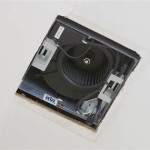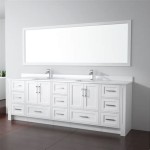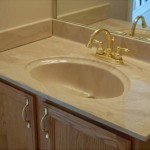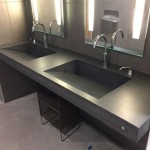How to Finish Wood for Bathroom Walls
Wood can bring warmth and character to a bathroom, but the humid environment requires careful finishing to prevent water damage and ensure longevity. Selecting the right wood, preparing it correctly, and applying a robust finish are crucial steps in this process.
Selecting the Right Wood
Not all wood species are suitable for bathroom environments. Opt for naturally water-resistant varieties like cedar, redwood, teak, or cypress. These woods contain oils and resins that repel water and resist rot and mildew. Avoid softer woods like pine or fir, as they are more susceptible to moisture damage.
Acclimating the Wood
Before installation, allow the wood to acclimate to the bathroom's humidity levels. This prevents expansion and contraction after installation, which can lead to warping or cracking. Leave the wood in the bathroom, unwrapped, for several days to adjust to the environment.
Preparing the Wood Surface
Proper surface preparation is essential for achieving a smooth, even finish. Start by sanding the wood with progressively finer grits of sandpaper, beginning with a coarse grit (around 80) and working up to a fine grit (around 220). This removes imperfections and creates a smooth surface for the finish to adhere to. Thoroughly clean the sanded wood to remove any dust or debris.
Applying a Sealer
A wood sealer acts as a primer, creating a barrier against moisture and improving the adhesion of the topcoat. Apply a thin, even coat of a high-quality, water-resistant wood sealer, following the manufacturer's instructions. Allow the sealer to dry completely before proceeding to the next step.
Choosing the Right Finish
Several finish options are suitable for bathroom walls, each with its own advantages and disadvantages. Oil-based polyurethane offers excellent water resistance and durability but can yellow over time. Water-based polyurethane dries faster and is less odorous, but it may not be as durable as oil-based. Epoxy resin provides a highly water-resistant and durable finish, but it can be more challenging to apply. Spar varnish, traditionally used for boats, is another excellent option for high-moisture environments.
Applying the Finish
Apply the chosen finish in thin, even coats, following the manufacturer's recommendations. Multiple thin coats are preferable to a single thick coat, as they dry more evenly and provide better protection. Allow each coat to dry completely before applying the next. Lightly sand between coats with fine-grit sandpaper (around 320) to ensure a smooth finish. Maintain adequate ventilation during the application and drying process.
Regular Maintenance
Even with a robust finish, regular maintenance is essential to preserve the wood's appearance and prevent moisture damage. Wipe up spills promptly, and avoid using harsh cleaning chemicals. Periodically inspect the finish for signs of wear or damage, and reapply the finish as needed. Proper ventilation is also crucial to minimize humidity levels in the bathroom and prevent mold and mildew growth.
Considering Alternatives: Wood-Look Options
For those seeking the aesthetic of wood without the maintenance requirements, several wood-look alternatives are available. These include porcelain tiles, vinyl planks, and laminate panels designed to mimic the appearance of various wood species. These materials offer excellent water resistance and durability and are easier to clean and maintain than natural wood.
Installation Techniques for Wood Paneling
Various methods exist for installing wood paneling on bathroom walls. Traditional tongue-and-groove boards offer a classic look. Shiplap boards create a rustic aesthetic. Board and batten adds architectural interest. Regardless of the chosen style, ensure proper spacing for expansion and contraction due to humidity fluctuations.
Ventilation is Key
Maintaining proper ventilation is crucial for the longevity of any wood finish in a bathroom. Ensure adequate ventilation through a properly functioning exhaust fan. This helps to remove excess moisture from the air and minimize the risk of mold, mildew, and wood damage. Opening a window after showering can also help to reduce humidity levels.

Bathroom Wall Panelling How To Master This Enduring Roper Rhodes

64 Stylish And Cozy Wooden Bathroom Designs Digsdigs

12 Cool Bathroom Wall Materials That Are Not Tile Bathtubber

8 Shiplap Bathroom Wall Ideas Designs Lily Ann Cabinets

Wood Wall Tiles That Inspire You

64 Stylish And Cozy Wooden Bathroom Designs Digsdigs

Board And Batten Bathroom Diy Angela Marie Made

Rustic Wood 8mm Bathroom Panels 375mm X 2 6m National Plastics

How To Install Shiplap In A Bathroom The Home Depot

64 Stylish And Cozy Wooden Bathroom Designs Digsdigs
Related Posts







